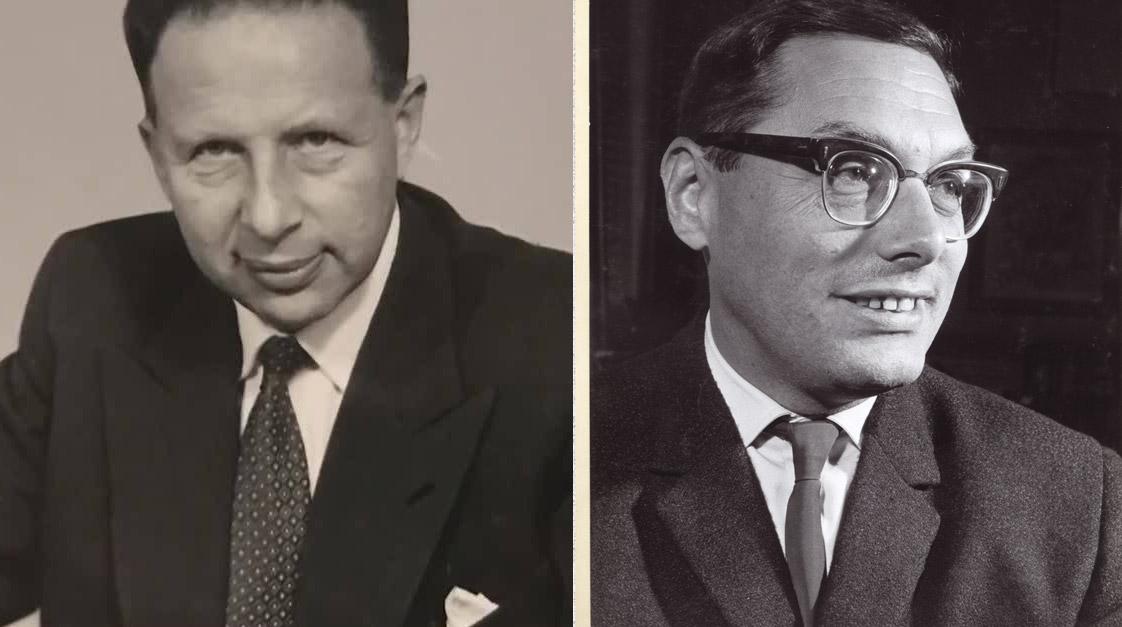The History of the Ambu Bag
Almost 20 years before the invention of the world’s first self-inflating manual resuscitator, Dr. Holger Hesse founded Testa-Laboratorium, which later became Ambu, in 1937.
True to Ambu’s modern-day values, Hesse developed products that make a difference in the lives of patients and doctors. Among these, the Sicca Haemometer is the first product that enables private practitioners to measure the amount of hemoglobin in the blood without having to send a blood sample to an external laboratory.
The Sicca Haemometer was a success because it was innovative, user-friendly, and top quality – and would lay the groundwork for the company’s most innovative effort yet.
In 1953, Hesse met anesthesiologist Dr. Henning Ruben. Together they invented the Ambu® Bag™ resuscitator, an instant revolution within resuscitation upon reaching the market in 1956. The medical milestone was the first portable, self-inflating manual resuscitation device that worked without a battery or an oxygen supply.
It remains a fixture in hospitals and emergency response departments today.
A Ventilation Revolution At the time of its invention, Denmark had been one of the hardest-hit countries in Europe by the polio epidemic. Dr. Christine Ball, an anesthesiologist at the Alfred Hospital in Melbourne, Australia, and an associate professor of perioperative medicine at Monash University, says hospitals relied on medical students, porters, and relatives to manually ventilate ill patients 24 hours a day. The manual ventilators at the time required an oxygen source.
At the time of its invention, Denmark had been one of the hardest-hit countries in Europe by the polio epidemic. Dr. Christine Ball, an anesthesiologist at the Alfred Hospital in Melbourne, Australia, and an associate professor of perioperative medicine at Monash University, says hospitals relied on medical students, porters, and relatives to manually ventilate ill patients 24 hours a day. The manual ventilators at the time required an oxygen source.
To make matters even worse during the epidemic, a truck drivers’ strike resulted in a failure to deliver oxygen to Danish hospitals.
“They very rapidly had to come up with a way of ventilating people without oxygen,” said Ball, who has written a history article in every edition of the journal Anaesthesia and Intensive Care for the last 30 years and is the 2020 Wood Library-Museum Laureate of the History of Anesthesia, the most prestigious award it bestows.
Enter Ambu.
“Henning Ruben came up with this idea of using bicycle spokes inside the bag to make the bags spring back, and that was the origins of the self-inflating bag,” Ball said. “The idea was so brilliant and so simple that you could squeeze the bag, ventilate the patient with air, and then it would entrain its own air and spring back into shape again. And that was really a revolution in ventilation techniques, especially for the general public and in resuscitation scenarios.”
The Evolution of Resuscitation
Ball said resuscitation practices in the public began in the 1700s with lifesaving societies. The first one was in Amsterdam, where the canal system led to a high number of deaths by drowning.
“They were trying to work out ways of resuscitating people, and mouth-to-mouth resuscitation is not a very pleasant thing to do on people who are bloated and have drowned in the river,” she said. “That wasn't very popular.”
This eventually led to the idea of ventilating with fireplace bellows. Pumping air with these devices either into the nose or down the throat was initially believed to be quite effective. In 1832, however, the Royal Humane Society withdrew its advocacy of the devices.
If not used appropriately, bellows applied too much pressure, creating holes in patients’ lungs, which led to deaths. They remained in use inside of hospitals where doctors understood the use of pressure and knew to utilize the bellows more gently.
Later in the 19th Century, a “concertina bellow” gained traction and was used considerably in World War II.
“They work like a piano accordion,” Ball explained. “Once again, that involves pulling and pushing, so that's quite complicated. They've got to have a way of pulling the air in, and then as you push it into the patient, not pushing it out around the bellows themselves.”
Many bellows and resuscitators were introduced in the 1950s and 60s, but they “were considered clumsy and tiring in prolonged use and rendered largely obsolete” by the invention of self-inflating bags.
In 65 years, no invention has yet to deliver the same fate to the Ambu Bag, for a number of reasons. Among them, Ball cited its size, portability, ease of use, and availability. Also, it doesn’t require an oxygen source.
“You can take this really simple lifesaving device and provide adequate resuscitation for somebody in the community,” she said. “I think that was the really revolutionary thing about it. It obviously has applications in war zones and those sort of places where you can actually ventilate people without oxygen. And in the hospital, it has meant that we can have them on the cardiac arrest trolleys and people can use them easily without a lot of training.”

The Men Behind the Bag
Hesse was born in Berlin, Germany, in 1900. As a young man, he went to the United States for a specialized training program with General Electric. Upon returning to Germany, he earned a doctorate in engineering. Hesse, of Jewish decent, fled Nazi Germany in 1935 and relocated to Denmark.
Hesse is credited with suggesting self-expanding foam rubber to replace the bicycle spokes in Ruben’s original model of the Ambu Bag. His founding principles of innovation, dedication, and patient care still guide Ambu.
Ruben, born in Copenhagen in 1914 as the eldest son of an orthodox Jewish family, was a man of many talents. He was a member of the Danish fencing team, a professional dancer, magician, thought reader , dentist, doctor, and inventor.
During the Nazi occupation of Denmark, Ruben escaped at night on a fishing boat to Sweden. He studied for two years to become a dentist in Stockholm. He returned to Denmark in 1945 and graduated medical school in 1946.
In 1953, Ruben developed a lightweight, foot-operated sucker. The product was first marketed by Ambu, bringing Hesse and Ruben together for the first time.
The rest is history.


